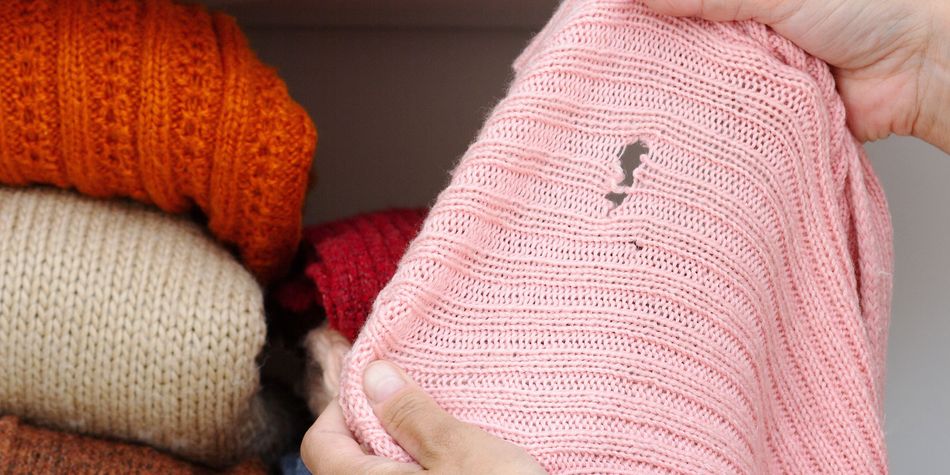By clicking a retailer link you consent to third-party cookies that track your onward journey. This enables W? to receive an affiliate commission if you make a purchase, which supports our mission to be the UK's consumer champion.
How to get rid of fruit flies and stop them coming back

Unseasonably warm days can herald the arrival of annoying winged intruders in your home, and chief of these is the fruit fly.
Although you might spot these tiny black flies all year round, warmer weather shortens their life cycle – meaning they breed more quickly and multiply fast. So before you know it, a couple of flies can turn into a full-blown infestation.
We asked the experts at the British Pest Control Association (BPCA) how best to get rid of and prevent fruit flies to keep your food and home pest-free.
From secret breeding grounds to elimination techniques, find out what really works.
Tips for living well - get our free Food & Health newsletter: shop savvy, eat well, stay healthy
3 fruit fly mistakes you could be making
Fruit flies are opportunists and will sniff out any chance to find a suitable feeding (and breeding) ground to thrive in.
You could be inadvertently creating the perfect environment for them, whether it's eating food without picking up crumbs or overbuying their favourite snacks.
1. Eating and drinking in your bedroom

Although they're often associated with kitchens and other food prep areas, fruit flies aren't fussy.
They'll happily settle in any room where there's suitable nourishment – including your living room or bedroom.
Be vigilant about clearing up crumbs or spills on furniture, carpets and rugs – even hard-to-spot spills, such as sweet fizzy drinks. You might not be able to see it, but a fruit fly will detect it instantly. Using a handheld vacuum cleaner is an effective way to deal with small messes quickly.
Although fruit flies don't bite humans, they can still potentially transmit harmful bacteria, such as E coli, listeria or salmonella, as they move from dirty to clean environments – for example from kitchen bins to countertops.
To keep your soft furnishings hygienic and fly-free, check out our best carpet cleaners and carpet stain removers. And for bedrooms, here’s how often you should wash bedding – plus tips on caring for sheets, mattresses and more.
2. Relying solely on fly spray or homemade traps

You might be tempted to reach for the fly spray, fly tape or even a homemade trap (such as apple cider vinegar in a narrow-necked bottle they can't escape from), but this is unlikely to be a complete solution.
Fruit flies can lay up to 500 eggs at a time and it only takes a week to go from egg to adult – so infestations occur quickly.
Alex Wade, pest management expert and consultant member of the British Pest Control Association, says: 'You need to tackle the whole lifecycle, from egg through fully-grown fly, to achieve complete control.'
He advises starting with strategies such as emptying and cleaning bins, and keeping doors and windows closed where possible, before moving on to traps and electronic fly killers. If nothing else works, you can try a chemical insecticide.
3. Buying too much fresh produce

Try not to overbuy fresh produce that's in danger of languishing in your kitchen. It's the perfect spot for fruit flies to lay their eggs (and for their larvae to feast on).
- Check your fruit bowl frequently for rotting or rotted produce. Use a lidded bowl or refrigerate fruit to disrupt the lifecycle of any eggs and larvae that happen to be on the produce.
- Look for rotting or rotted items in your vegetable box. If you have veg and fruit delivered, check when it arrives to ensure there's nothing lurking at the bottom that could attract fruit flies and rot other produce.
- Freeze any food that can be frozen. For example, put white bread products in the freezer if they're past their best-before date, and only defrost what you need.
- Don’t forget to check less obvious hotspots. Cut flowers in vases can attract fruit flies if the water becomes stagnant. Refresh the water regularly, trim dying stems — or better still, preserve your bouquet to enjoy it for longer. Try these 3 easy ways to preserve flowers at home.
What temperature should a fridge be? Want flavourful food, minimal wastage and less chance of harmful bacteria in your fridge? Follow our advice on fridge temperatures and food storage.
How to prevent fruit flies
- Keep your sink and drains clean. Flies often lay their eggs in drains, as they favour damp places to lay their eggs. Pour boiling water down the plughole to kill fruit fly eggs and larvae, which can usually survive typical water flow. If you're going on holiday, flush through the kitchen sink to remove any residues that might be attractive to fruit flies. Boiling water taps can be a useful way to flush out the plughole regularly, although a full kettle of boiling water is also very effective. See our comparison of boiling water taps and the best kettles from our lab tests.
- Empty your food waste bin regularly. Choose one with a well-fitting lid, and close it while you're peeling veg rather than leaving it open for flies to enter and lay their eggs. Clean under the rim of the lid, too, as eggs and larvae might be lurking there. Wash kitchen and bathroom bins regularly, too.
- Dry out mops, cloths and sponges. Fruit flies will happily breed in anything wet or damp, even if it holds just a thin film of moisture. This includes cleaning cloths and mop buckets, especially if there are food particles stuck to them.
Best kitchen drain unblockers - from Cillit Bang and Mr Muscle through to home remedies like bicarbonate of soda, we reveal which unblocker works best
3 ways to get rid of fruit flies
There's plenty you can do to prevent a fruit fly infestation in your home, starting with these simple suggestions:
1. Remember fruit flies don't only eat fruit

Despite their name, fruit flies have a broad diet, so if you're trying to get rid of them you need to look at more than just how you store fruit. Other things to keep tabs on:
- White bread – anything 'yeasty' including white loaves, burger buns and pita bread
- Veg – including overripe onions and potatoes
- Fermented products – including soy sauce, kombucha and apple cider vinegar, and alcohol including beer and wine
- Yoghurt and other cultured foods – for example sour cream, sauerkraut and sourdough bread
Store these foods where fruit flies can't get to them, such as in a fridge, sealed container or bread bin, and wipe away spills and drips on the sides and tops of jars and bottles that might attract them.
Food storage tips to help make your food last longer: Follow our simple food storage tips for more flavoursome food, less wastage and less chance of harmful bacteria in your fridge.
2. Rinse out your recycling

Food and drink residue can spoil recycling materials such as paper, and even damage recycling machines – but that's not the only reason to rinse containers before recycling.
Dirty bottles and jars or containers from last night's takeaway are a magnet for fruit flies.
They don't need to be squeaky clean, so a quick rinse should do the trick, although do check with your local authority in case they have different requirements.
Best dishwashers 2025 – choose the best dishwasher for you with our top recommendations and expert tips.
3. Clean pet food bowls and cages regularly

Leftover food languishing in a pet bowl can attract fruit flies, so clear away any that hasn't been eaten and wash the bowl out with boiling water before putting the next meal in.
A fruit fly infestation could also start in the cage of your rabbit, guinea pig or any other small animal that feasts on fruit and veg.
A spokesperson for the British Small Animal Veterinary Association (BSAVA) said: 'Ensure the hutch is kept clean; in particular, remove any traces of uneaten fruit or vegetables every day and change the bedding frequently.'
Best and worst cat food brands - from Felix to Whiskas, we reveal which cat food brands off the best value for money and which ones cats prefer.
Fruit flies, drain flies or fungus gnats: what's bugging you?
If you've spotted little flies around the house they could well be fruit flies, but they might also be drain flies or fungus gnats.
Here's how to tell the difference:
Fruit flies

These are tan to brown in colour and their oval bodies are about 3mm in length and around 2mm wide.
They have translucent wings, feathery antennae and large, bright red or black eyes.
Drain flies

Also known as sink flies, sewer gnats or moth flies, these non-biting gnats are light grey or tan, are around 1.5-5mm long, and their wings are feathery-looking.
Spraying insecticide will provide temporary relief, but it's important to tackle the root cause. This is usually standing water found in places such as infrequently used toilet bowls, sink or floor drains, or drain pans under refrigerators.
Fungus gnats

Adult fungus gnats are greyish brown flies around 3-4mm long.
Like fruit flies, fungus gnats thrive in moist, organic-rich environments — but instead of your fruit bowl, it's your potting soil and compost they’re after.
They can often be seen running over the surface of seed trays and pots or flying slowly around plants.
Using garden compost that's been left open to the elements for houseplants – or nurturing seedlings indoors – are common ways they get inside. Like fruit flies, they can lay hundreds of eggs a day and quickly get out of control.
Try watering houseplants less often so that the soil dries between watering. This will help to break the life cycle. Sticky traps and nematodes (a biological control using tiny harmless soil-dwelling parasites you water into the soil) both work well to get an infestation under control.
Check our advice about controlling fungus gnats
If you're potting up houseplants or starting seeds indoors, opt for sealed, high-quality compost to reduce the risk – see our best compost picks for clean, reliable options. And if you’re nurturing seedlings, a warm, humid environment can encourage gnats to multiply. A heated propagator with good ventilation can help strike the right balance – check out our guide to the best heated propagators.




